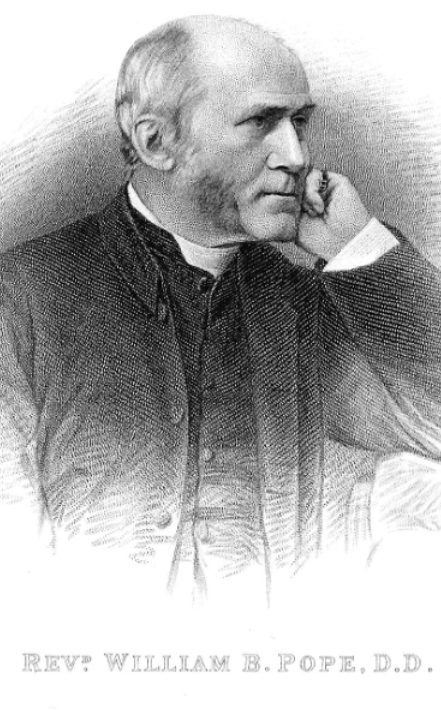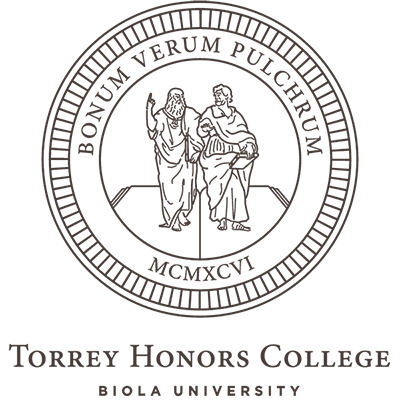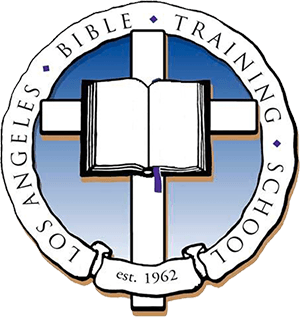A scene from The Canterbury Psalter (12th century)
Blog
The Indivisible Person of Christ (W.B. Pope)

The heart of William Burt Pope’s Christology is his effort “to concentrate attention on the unity and the indivisibility of the Saviour’s Incarnate Person.” His Christology, in other words, is rightly entitled The Person of Christ, because for Pope, all the most important things that need to be said about Christ are statements about his person. More technically we could say Pope’s focus is on the single hypostasis of the hypostatic union; more devotionally we could say Pope looks to Jesus, not to the things that support him or surround him or are accomplished by him, but always relentlessly to Him, Him, Him.
Pope wrote a great deal, including of course a three-volume systematic theology, but it’s interesting that he only produced one monograph devoted to a single doctrine. That doctrine was Christology, and that Christology was uniquely centered on The Person of Christ. So although his work shows a theological mind that ranged across the whole field of Christian doctrine, the one place where he dug deeper is here. It truly is the center of his overall project as a theologian.
The 1871 edition of The Person of Christ has a 2-page Preface that draws attention to the focused or limited scope of his Christological inquiry: he intends to study the indivisible Person of Christ, and “to this sole purpose he has been rigorously faithful. The reader must also bear it always in mind: otherwise he will mark the absence of many things which so great a title might lead him to expect, but which do not come within the range of the proposed design” (Preface, unnumbered page).1
This is something just a little bit hard to write about: surely every Christology is about Christ, so what is Pope huffing and puffing about? What would it mean to write Christology with attention riveted on the person, the indivisible person? In the first part of his discussion, while he is defining terms, he shows that, at the very least, he intends to guard his phraseology. He is so careful in his choice of terms that he will avoid phrases like “two-nature Christology,” because he wants his language to point consistently to the person. So “indivisible person” is better. Pope has several such turns of phrase.
But the best way Pope finds to make his case is to provide a brief sketch surveying the main lines of Christian doctrine, all from the point of view of Christ’s indivisible person. So in a section entitled “Relation of the Indivisible Person to Christian Theology,” he works through the major doctrines that are most obviously influenced by his Christological focus. “The relation of the one and indivisible Person of Christ— of His Person as one and indivisible—to the circle of Christian doctrine is no less than fundamental.” (38)
I. Revelation:
Pope locates the doctrine of revelation within the doctrine of Christ’s person: “At the basis of the Christian Faith lies the idea of a Revelation of God to man, to his mind and in His nature. In His incarnate Person our Lord is not only the medium of that revelation, He is the revelation itself.” (39) This may sound a bit Barthian to modern readers, but I suspect it is better aligned with the old Protestant Scholastic doctrine that there is an archetypal knowledge of God transferred to us by impression or ectype:
Here is the great distinction. No knowledge of God can come to us through the report of an observer from without ; it must come from within, from the bosom of the Father Himself. “None by searching can find out God,” we are told in the Old Testament; in the New Testament no man can even “approach” to search (1 Timothy vi. 16). Nothing is more certain than that all revelation is most absolutely shut up to Christ. And as we have the only Revealer of God, so His revelation is in the indivisible unity of His Person brought nigh to us, “in our mouth and in our heart.
So far so Trinitarian: the Son knows the Father. But in keeping with his commitment to the indivisible person in both natures, Pope immediately unfolds this into a view of Christocentric revelation that depends on the incarnation: “The Son does not instruct a human person with whom He is united, that He again as a prophet may instruct us. He is in our nature; and we receive through union with Him out of His fulness of grace and truth (John i. 14, 16)…. He makes the knowledge of God in some sense ‘common to man,’ unveiling the Father through our own faculties and “in our own language wherein we were born.” (40) This could certainly be described as a participatory account of revelation.
II. Mediation:
“No idea is more fundamental in Christian Theology than that of Mediation; and none so obviously depends for a right conception upon its relation to the one and indivisible Person of Christ.” (43) Pope subdivides this longest point into Incarnation, Atonement, and Mediatorial Ministry. I’m tempted to insert long block quotations here, where Pope’s writing soars. But by way of summary, I’ll say that Pope presents the incarnation as a mediation in the sense that it is a “pledge of reconciliation of God and the race,” since it “presupposes the coming atonement.” As you can tell, Pope opposes an “incarnation anyway” view, or the “speculative error of a necessary incarnation independently of sin.” Pope’s treatment of atonement is brisk but certain: two natures are necessary, one person is necessary, and everything is resolved into the identification of Christ as not only the atoner, but himself the atonement. As for Christ’s mediatorial ministry, Pope uses this category to consider Christ’s humbling and exalting as a unified person, and extends his reflections as far as the eschaton.
III. Real Presence:
Pope spends time considering how Christ is present, truly and personally present to his people. To explain this, he has to explore the way the ascended Christ is made present to us by the Holy Spirit (such that Christ is “in his one person present and absent”). He also takes the opportunity of clarifying the way in which Christ is sacramentally present, polemically distinguishing his (or rather, the Methodist) view from other sacramental accounts. Though Pope has a reasonably high view of the sacraments, he obviously chose the section heading “Real Presence” in order to make sure that any view of sacramental presence was decisively subordinated to a broader view of Christ’s personal presence; he considers a sacrament-first view of Christ’s presence to be cart-before-the-horse, that is, theologically preposterous. This section would be stronger if Pope had developed it explicitly as a study of the Son’s mission from the Father in the Spirit, but it’s easy to see a traditional theology of sending as the implicit content of what he does say.
IV. Personal Religion:
This is a rich section on union with Christ, faith in Christ, prayer to Christ, worship and devotion to Christ, obedience to Christ, and repose on Christ as “disposer of man’s destiny.” Although the secret of William Burt Pope’s power as the greatest Methodist theologian is that he tied the movement’s experiential energy to the great objective truths of catholic Christianity, the heartbeat of personal piety is always evident. And it is easy to see that providing a doctrinal foundation for “personal religion” is the actual motive of Pope’s doctrinal labors, here as everywhere.
V. The Divine-human Head of the Church.
Here Pope takes first steps into the doctrine of ecclesiology, by noting especially how Christ is the “eternal center of the visible and invisible churches made one.” He also emphasizes that Christ’s person is the one real “test of orthodoxy in the visible Church.”
Pope develops his full doctrine of Christ at greater length in his more systematic works like the three-volume Compendium of Christian Theology and the Higher Catechism of Theology. But the monograph on The Person of Christ is the most definite statement of his characteristic emphasis; if you catch his particular kind of Christocentrism here, you are well equipped to see it everywhere else in his thought, and perhaps even to be guided by it in your own.
__________________________________________
1A bibliographic note on the two editions of Pope’s Person of Christ. It was originally published as The Person of Christ: A Discourse, bearing the sub-title “Delivered at the Grosvenor-Street Chapel, Manchester, July 25th, 1871 in Connection with the Assembling of the Wesleyan-Methodist Conference, Being the Second Lecture on the Foundation of John Fernley, Esq, With the History of the Doctrine of Christ’s Person, and Notes.” Notice that this volume contains two things: the Fernley lecture itself (an essay in dogmatics), plus a sketch of the history of the doctrine.
But what you want to read is the 1875 second edition, which goes under the Title-Subtitle combination of The Person of Christ: Dogmatic, Scriptural, Historical, and the explanatory sub-sub-title of “The Fernley Lecture of 1871, With Two Additional Essays on the Biblical and Ecclesiastical Development of the Doctrine, and Illustrative Notes.” So this second edition is three things: the Fernley Lecture (Dogmatic) plus the doctrinal history, plus a biblical survey. The history-of-doctrine material is slightly expanded from the first edition, but what is brand new is the extensive essay on the witness of Scripture to the indivisible person of Christ: 80 pages of Pope’s Bible exposition, with his characteristic focus on Christ’s person. As Pope notes, with the addition of this material in the second edition, “The Writer’s original design is now accomplished : that of exhibiting consecutively the Dogmatic, Biblical, and Historical elements of this fundamental doctrine.”
About This Blog

Fred Sanders is a theologian who tried to specialize in the doctrine of the Trinity, but found that everything in Christian life and thought is connected to the triune God.


